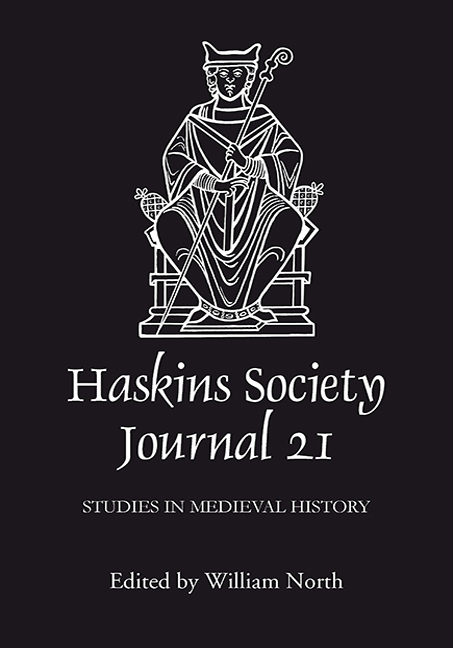Book contents
- Frontmatter
- Contents
- Editor's Note
- Abbreviations
- 1 Bede and the Rewriting of Sanctity
- 2 The Role of Rivers and Coastlines in Shaping Early English History
- 3 Containing Virginity: Sex and Society in Early Medieval England
- 4 Pagans and Infidels, Saracens and Sicilians: Identifying Muslims in the Eleventh-Century Chronicles of Norman Italy
- 5 Robert Curthose and the Norman Episcopate
- 6 The Revival of Roman Law: the Exceptiones Petri
- 7 Mutatis Mutandis: Literary Borrowing from Jerome's Letter to Eustochium and Others in the Life of Blessed Bernard of Tiron by Geoffrey Grossus
- 8 Acting Out Friendship: Signs and Gestures of Aristocratic Male Friendship in the Twelfth Century
- 9 The Quantification of Assarted Land in Mid- and Late Twelfth-Century England
- 10 Origins of Courtliness after 25 Years
1 - Bede and the Rewriting of Sanctity
Published online by Cambridge University Press: 28 April 2017
- Frontmatter
- Contents
- Editor's Note
- Abbreviations
- 1 Bede and the Rewriting of Sanctity
- 2 The Role of Rivers and Coastlines in Shaping Early English History
- 3 Containing Virginity: Sex and Society in Early Medieval England
- 4 Pagans and Infidels, Saracens and Sicilians: Identifying Muslims in the Eleventh-Century Chronicles of Norman Italy
- 5 Robert Curthose and the Norman Episcopate
- 6 The Revival of Roman Law: the Exceptiones Petri
- 7 Mutatis Mutandis: Literary Borrowing from Jerome's Letter to Eustochium and Others in the Life of Blessed Bernard of Tiron by Geoffrey Grossus
- 8 Acting Out Friendship: Signs and Gestures of Aristocratic Male Friendship in the Twelfth Century
- 9 The Quantification of Assarted Land in Mid- and Late Twelfth-Century England
- 10 Origins of Courtliness after 25 Years
Summary
Scholars have often identified texts that influenced the style or content of many of Bede's works, but the resulting text is frequently too far removed from the known sources to suggest a linear connection. In the case of Bede's prose Life of Cuthbert (hereafter VC), however, the connection between Bede's source material and his finished text is much more direct. Bede acknowledged that the majority of information in his VC came from the Anonymous Life of Cuthbert (hereafter VA) written by a monk of Lindisfarne. Bede not only used the VA as a source of information about Cuthbert's life and miracles but also retained, for the most part, the sequence of events from this earlier text. Thus, for the VC, we have both the text that was Bede's main source and the finished product of his own writing process. The amount of material that Bede retained from the VA allows us to isolate Bede's alterations and examine them as representative of his authorial method and goals. The goal, therefore, is not to understand provenance but mutation: to examine how Bede transformed material from the VA into his new text.
Although we know Bede's main source, his purpose in writing the VC is unclear. Considering how much of the VA's content and structure Bede adopted into his own text, it appears that he did not consider the Anonymous's information or organization to be faulty. Many scholars have reasoned that the desire for a new Life of Cuthbert was rooted both in the needs of the English Church at large and the Lindisfarne community in particular. Catherine Cubitt, on the one hand, perceives Bede's removal of Melrose-centered topography and the addition of a causation-driven narrative as efforts to help reconcile the saint with the possibly contentious Lindisfarne community as well as to aid in the establishment of Lindisfarne itself as a cult center. Clare Stancliffe, on the other, views Bede's VC as an attempt to recast Cuthbert as the ideal Romanized monk-bishop, an effective leader in the affairs of both this world and the next, in contrast to the Anonymous's portrayal of a traditional, Irish-style ascetic who scorns the worldly involvement required by pastoral care.
- Type
- Chapter
- Information
- The Haskins Society Journal 212009. Studies in Medieval History, pp. 1 - 20Publisher: Boydell & BrewerPrint publication year: 2010

